Genre: Fighting Developer: Midway/Probe Publisher: Acclaim Players: 1-2 Released: 1993
I tell myself I’m not really a Mortal Kombat fan, but I suppose I’ve fallen into a sort of casual fandom like people who embrace the Seattle Seahawks. Mortal Kombat is, of course, the original arcade one-on-one fighting game featuring digitized fighters and oodles of gore. Despite not thinking highly of the game compared to its contemporaries, I like the franchise enough to have seen the first movie in the theater and have purchased the first two Mortal Kombat games back then. The movie had the benefit of looking and sounding amazing even if it didn’t have the gore fans wanted. Mortal Kombat II on the 32X may have not been all it could be, but it still blew the pants off the Genesis version and helped me justify my new 32-bit mushroom. Likewise, Mortal Kombat on Game Gear reminded me that not only could my portable TV play games, but that they could look really good. How can you not be in awe of these large digitized sprites!?
Well, you not awe once you leave the screen shots behind and see the game in motion. Although the screen shots definitely make the game look all the part of a “kontender,” the barely-there animation can’t write the checks the magazine advertising and packaging had long since cashed. Characters look and move OK – enough to be playable and fine given the age and hardware limitations, but it still feels like too much is sacrificed on that end to sustain a fighting game. The Kombatants stutter their way through each match, and the cramped screen can make playing the game a rather claustrophobic experience. Flicker is abundant, most noticeably on horizontal movements and attacks. Good luck if you’re playing Raiden. The Game Gear’s color depth does let the chunky handheld render the digitized fighters so that they look similar to their 16-bit versions – lower-res and washed out but still recognizable – and definitely better than the Game Boy port, although that’s not saying much. Much of the game can be surmised in similar fashion, saying that it looks good… for the Game Gear.
As with many games which push the limitations of hardware, reaching for the stars just draws more attention to the flaws. While the Game Gear Mortal Kombat looks good on the portable system thanks to its screen-filling character sprites and is certainly a commendable (if flawed) port, some concessions had to be made to get it running on the portable. For starters, the Game Gear cartridge is docked a character as developer Probe had to cut Kano from the available kombatants, removing one of the few fighters from the tournament who aren’t portrayed by one of the Pesina brothers. We get Liu Kang (Ho Sung Pak) and his bicycle kicks, the thunder god Raiden (Carlos Pesina), a pre-Playboy Playmate Sonya Blade (Elizabeth Malecki), actor Johnny Cage (Daniel Pesina), and the palette swapped ninjas Scorpion (D. Pesina) and Sub-Zero (D. Pesina). I think if I had to axe one of the original fighters to fit on the tiny cartridge, I’d probably choose Kano, too. His kung fu just wasn’t as strong as the others.
Of course, this is Mortal Kombat, so no one’s kung fu is particularly good. Apart from the special moves, the digitized humans all fight in the same manner. Punch, kick, uppercut, sweep, jump kick. Same power; same range; same everything. Mortal Kombat didn’t stake its claim to fame on gameplay, and while the arcade game does have a handful of combos and even infinites, the game is horribly unbalanced and not particularly satisfying as a competitive, skill-based fighter. I will say that the Internet has shown me how people have dissected the arcade game further than I could ever have imagined but spamming the same move or two ad nauseam for a win makes the game feel more cheap than deep, especially when so many combos look so similar. Launch with uppercut; chase enemy; repeat. Punch; punch; punch; punch; punch. It’s odd that the creators didn’t take more liberties with the motion capture to play with different heights, fighting styles, and strikes. Midway went out of its way to make everyone play the same, going so far as making sure that the 6’0″ Carlos Pesina was on equal footing as his 5’7″ brother Daniel and 5’5″ Malecki, leaving their special moves to be the sole mark of individuality in how they play.
Issues with Probe’s Game Gear port diminish the legitimacy of the fighting game even further, as players now must contend with sluggish movements and spotty collision detection. Those ridiculous ground-to-ceiling uppercuts can connect on whiffs, and the response time from inputs make any of the working those few combos from the arcade game a bit of a lost cause. It can be loose and a bit jerky, but the fighting game plays well enough. The five-button control scheme scales down well to the system’s three button layout (start blocks). If you temper your expectations, you’ll find the game to be a reasonably fun outing but expecting the game to play as well as the arcade game… well it ain’t gonna happen.
Probe had to sacrifice more than the animation and Kano to get Mortal Kombat onto the Game Gear. The game is limited to just two stages –The Pit and the dungeon -both very bland looking and not at all memorable (I really miss Shang Tsung’s Courtyard). Readers may think I’m a fool for saying The Pit is not memorable, but it hardly deserves its name when players also can no longer uppercut enemies into the waiting spikes below. The loss of The Pit fatality is not a game breaker, but it’s still missed given it was one of the few truly innovative aspects of the original Mortal Kombat, popular enough for games such as Eternal Champions to adopt the concept of a stage fatality.
The cartridge is also “missing” the blood and gore which made the game famous, but it can be “restored” via a code the introductory sequence heavily hints at at the start of the game. The code – 2, 1, 2, Down, Up – must be entered on the third screen referencing the code, and that itself makes for an annoying process, especially on a portable system, having to wait a bit and enter in some code just to play the game as intended. I don’t understand the benefit here of locking away content via a code as it surely had little impact on the game’s rating or the content within. You can also forget seeing “Toasty!,” “Test Your Might,” or any of the fun bonuses from the arcade game. We’re also missing the deep, booming voice announcing the game as you’d expect. The chirpy Game Gear sounds do their best to mimic a couple of the arcade arrangements, but it’s not the same.
It’s hard to write about the port and not have the review turn into a laundry list of what the game isn’t. Taken on its own, the game is a decent portable one-on-one fighter, especially given the lack of options at the time. Mortal Kombat is as good a port as can be expected from the Game Gear, but the game loses much of its personality in the konversion. If you ever time travel to 1993 and want to waste away your once-in-a-lifetime experience playing Mortal Kombat on a bus, then this should do. Unfortunately for our Game Gear friend, readers without the ability to bend space and time can now find any number of better, more authentic options to enjoy Mortal Kombat outside the home.
SCORE: 5 out of 10


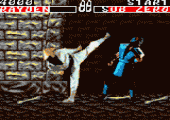
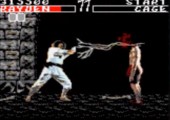
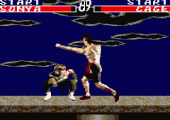
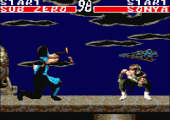
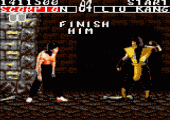
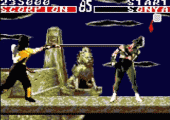
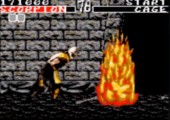
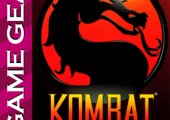
Recent Comments